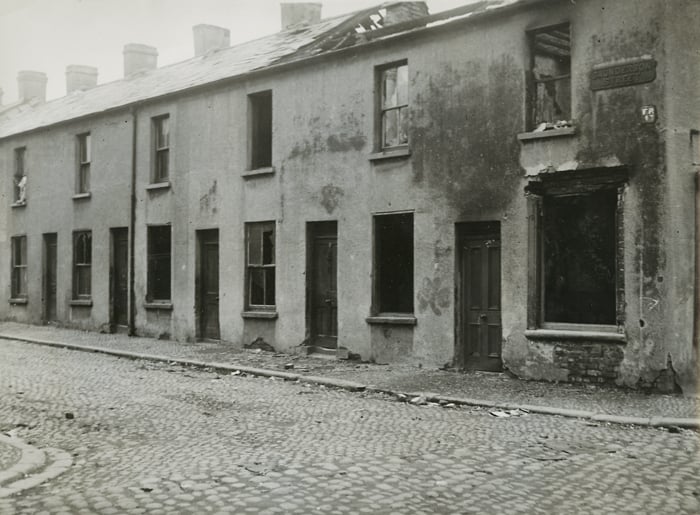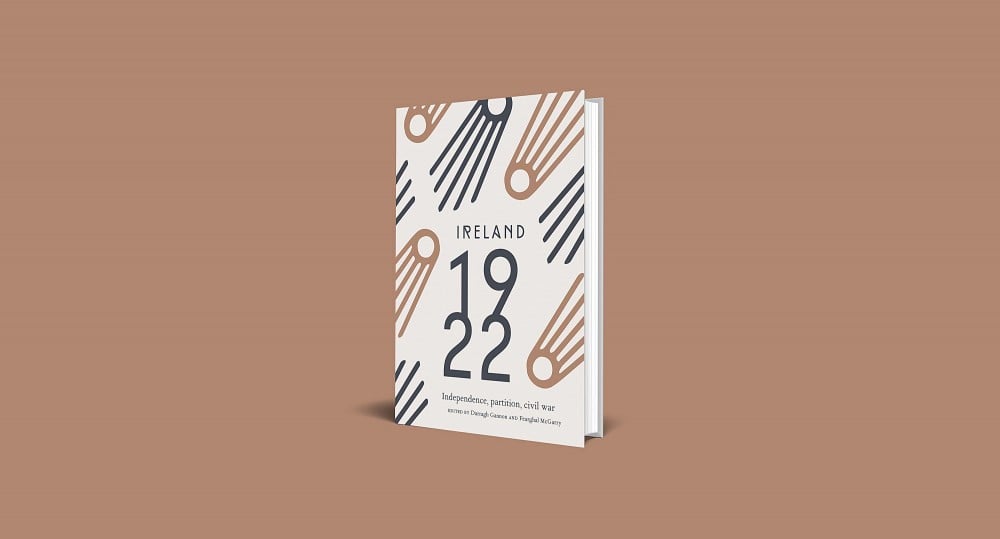30 March 1922: The Craig-Collins Pact
‘Peace is Today Declared’: Conciliation Committees and the 1920s Troubles
By Tim Wilson
‘Peace is today declared.’ Rising in the House of Commons late on the evening of 30 March 1922, Winston Churchill thus dramatically announced the reaching of an agreement between Sir James Craig (as prime minister of Northern Ireland) and Michael Collins (on behalf of the Irish Free State).¹ Under the circumstances, his optimism was—to put it mildly—striking.An earlier, similar, deal (of 21 January) had sunk without trace. Killing rates in Belfast were at their twentieth-century peak.² Yet Churchill’s ebullient showmanship distracted from these brutal realities to promise ‘a reformed, non-sectarian Northern Ireland so far as security and employment policy were concerned, in exchange for an end to IRA violence…and Dublin recognition’.³
Given that it was announced with dazzling fanfare in London, it is easy to overlook how far the Craig–Collins pact was actually a peace settlement designed in Belfast. Its substance ‘derived not from Collins or the Provisional Government but from the leader of the Irish Parliamentary Party in the North, Joseph Devlin, and from a group of Belfast Catholic businessmen who favoured an accommodation with the Northern government’.⁴ These were the prime movers behind the pact’s commitments to create mixed police forces in Belfast as well as a Conciliation Committee ‘of equal numbers (Roman) Catholic and Protestant…to hear and investigate complaints as to intimidation, outrage, etc’.⁵ In fact, the thinking behind the deal was not new. After the shipyard expulsions of July 1920, in which over five thousand Catholics, and some two thousand left-wing Protestants, were forced from their jobs by loyalist groups, there had been similar public calls by the Irish Parliamentary Party for a conciliation committee.⁶
Examined closely, then, the Craig–Collins pact draws attention to wider experiments in conflict reduction that deserve to be better remembered. Selfstyled conciliation or peace committees first emerged right across north-east Ulster during the troubled summer of 1920.⁷ IRA activity was their direct stimulus.⁸ Such peace movements were an elite, rather than a mass, phenomenon. Indeed, they were emphatically bourgeois. Politically, they usually represented a loose conservative alliance of rival ‘moderates’: unionists and Devlinite nationalists. Socially, they were drawn from alliances of clergy and business elites. Institutionally, they remained both under-developed and transitory. Women seem to have played no role in them. Although widely dispersed, such committees tended to remain strongly localist in focus. But the sheer speed of their appearance across a wide region suggests the adoption of ready-made templates. Non-aggression pacts had indeed been a marked feature of the long Third Home Rule crisis of 1912–14. By their very nature, though, these agreements tended to be cold bargains inspired by ‘a shared vision of catastrophe’⁹
Such dismal visions offered unstable vehicles for cooperation—as the example of Dungannon testifies. On Friday, 3 September 1920, a peace meeting was held at the Ranfurly Arms Hotel. Chaired by Robert Leith, leader of Dungannon Urban Council, it attracted around fifty ‘business and professional representatives’: an impressive showing for a small town with a population under 4,000.¹⁰ Reading between the lines of the press reports, though, one can sense the tension in the room. When Canon McEndoo proffered some guarded remarks on the dynamics of violence (‘he would say nothing as to the merits or demerits of Sinn Féin, but as long as there was provocation, so long and so sure would there be a strong temptation towards reprisal’), he was sharply rebuked by a local priest (‘he… was not a Sinn Féiner himself, but at the same time he thought to attribute offences to any organisation, either Sinn Féin or Orange, at a meeting such as that, might hurt the feelings of some of those present’).¹¹ A resolution to request military protection for the town was narrowly rejected (by 29 to 21 votes).¹² In a coordinated move, clergy exhorted their congregations ‘to abstain from giving offence either by word or action and to avoid crowds’.¹³

Terraced houses in Saunderson Street, the Marrowbone, burned by loyalists, 17 April 1922. (Image: UCDA Desmond FitzGerald Collection: P80/PH/157; reproduced by kind)
Although agreeing on improving street lighting, the Dungannon Peace Committee that emerged from this public meeting clearly struggled to agree more forceful measures. Four of its members who were magistrates ‘requested that the council should form patrols in the various wards’, which in a ‘mixed’ town surely risked the possibility of sectarian composition.¹⁴ We do not know the outcome. Attempts to reorganise the Ulster Volunteer Force in Dungannon were already underway at the time—as the Royal Irish Constabulary had noted warily.¹⁵ It is also worth noting that ‘peace pickets’ had emerged that summer during the rioting in East Belfast, under the aegis of a Church of Ireland minister, John Redmond. These were highly praised.¹⁶ But such freelance efforts arguably also risked evolving into Orange vigilantism.
Peace committees were not just precautionary. Indeed, they often emerged in the aftermath of serious blood-letting. Thus, the military crackdown on Derry (late June 1920) was accompanied by the formation of a Conciliation Committee: ‘a delightful thing’ in the words of the judge who opened the July Assizes.¹⁷ By November 1920 it was attempting to calm tensions by disavowing ‘rogue’ death threats against both loyalists and republicans.¹⁸ When cycles of violence petered out into fragile stand-offs,local peace conferences attempted to consolidate these: this was the pattern in both the Clones/Roslea area (April 1921) and at Desertmartin (May 1922).¹⁹ Of course, it is often impossible to demonstrate why such violence did not then re-ignite.²⁰ But the investment in these efforts is nonetheless striking. At Strabane in June 1922, the Conciliation Committee brokered a cessation of sniping across the new frontier.²¹
By that time, hopes aroused by the Craig–Collins pact had long evaporated. Its Conciliation Committee was dead. Two of its Catholic members had been arrested. Another three were on the run.²² Given the wider context,the abject failure of the pact was always its most likely outcome. But that is no reason to continue to ignore the less ambitious—but perhaps more consequential—peace movements that arose across Northern Ireland between 1920 and 1922. However ineffectively institutionalised, they bear witness to the resilience of informal mechanisms of conflict de-escalation at local levels:‘what can never be quantified is what evils may have been prevented’.²³
Extracted from Ireland 1922 edited by Darragh Gannon and Fearghal McGarry and published by the Royal Irish Academy with support from the Department of Tourism, Culture, Arts, Gaeltacht, Sport and Media under the Decade of Centenaries 2012-2023 programme. Click here to view more articles in this series, or click the image below to visit the RIA website for more information.






















